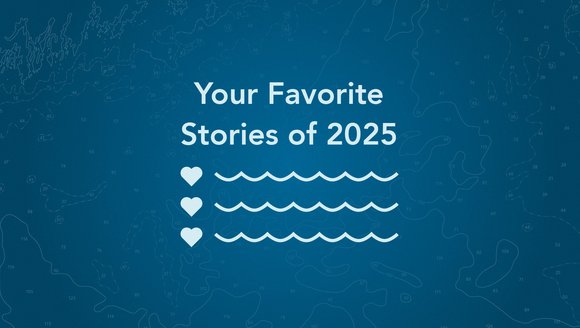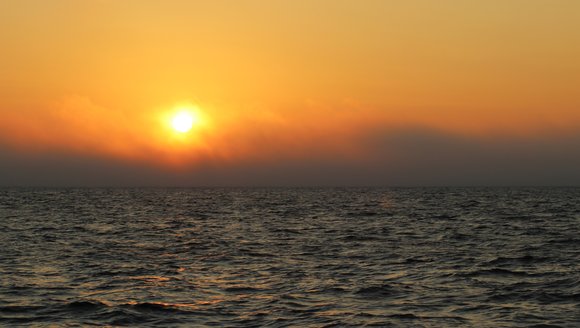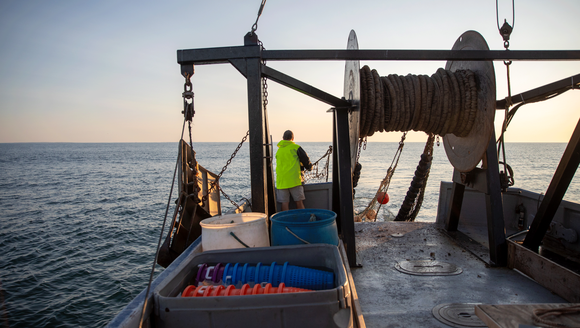Atlantic Ocean Tropical Tuna Tagging Program
Tracking tropical tuna to improve population assessments
People pursue tropical tunas (skipjack, yellowfin, and bigeye) around the globe as sources of high-volume low-cost protein, and even as high-end sushi and sashimi products. By volume, skipjack tunas are the third largest fishery in the world, and when combined with the yellowfin tuna (often caught in the same schools as skipjacks) make up the second largest fishery in the world. Despite their prominence in global fisheries, we know surprisingly little about the life history of these highly migratory species. This makes population assessments difficult and stock statuses uncertain. The International Commission for the Conservation of Atlantic Tunas (ICCAT) established the Atlantic Ocean Tropical Tuna Tagging Program to learn more about the migratory pattern of these fish and how to improve their Management. UMaine and GMRI are partnering with ICCAT to tag these tropical tunas in the northwest Atlantic.
Project Goals:
- Engage recreational and commercial anglers in a conventional tagging program for tropical tunas.
- Understand the migratory routes and habitat uses for skipjack, yellowfin, and bigeye tuna in the Atlantic Ocean.
- Improve the assessment and management of tropical tuna fisheries to promote stable and sustainable ecological and economic systems.
There is a general lack of information on the life history of tropical tunas. Basic attributes like age and stock composition, spawning dynamics, migratory routes, and habitat utilization remain poorly understood. For example, yellowfin and bigeye tuna are managed as a single, Atlantic-wide stock, yet there is little to no data that can be used to support those hypotheses. The Gulf of Guinea is known to be the major spawning ground for these tropical tunas, but histological evidence suggests additional spawning grounds in other regions of the Atlantic. We know little about which fish spawn in which areas, if they visit more than one spawning ground throughout their lives, and what the overall exchange of fish across the ocean basin might be. What we do know from limited conventional tagging is that the Atlantic may be unique compared to other oceans. It appears yellowfin tuna in the Atlantic express basin-scale migrations that can exceed 6,000 miles — migrations which seem to be restricted in other ocean basins. Explanations for why this occurs in the Atlantic, or if it even still occurs, remain elusive.
Non-conventional techniques used to identify stock structure in other tunas (e.g., otolith chemistry, genetic analyses), unfortunately, don’t work well for tropical tunas, so determining if they cross from one side of the ocean to the other requires more effort. Therefore, we rely on conventional and electronic tagging methods to gain understanding into how these tropical tunas use the Atlantic basin. Using information gained from those methods, we can assess and manage the stock more appropriately.
This project uses a large network of commercial and recreational fishermen who deploy conventional and electronic tags on skipjack, yellowfin and bigeye tuna throughout the northwest Atlantic. Conventional tags are simple. A printed unique number is placed on a small plastic tube attached to a nylon leader, and when fishermen catch one of these tunas, they put the tag in the fish and record appropriate data like fish length, species, and location. If the fish is recaptured and the tag turned in, we get the recapture location. While the sophistication of these tags is pretty minimal, they can tell us a fair amount about large-scale movements across ocean basins.
Electronic tags are a bit more sophisticated. They can record data for up to ten years and may be placed on the tuna externally or internally. Some require recapturing the fish to retrieve data, but other fishery independent tags possess the technology to report their data to an orbiting satellite network without having to recapture the fish. Electronic tags provide higher level data resolution, and also collect information on water temperature, depth, and location. They are more versatile and useful than conventional tags, as they can provide answers to more questions about habitat uses, migrations, and stock structures — but they are more expensive, and so are used less frequently.
Read Next
-
Your Favorite Stories from 2025
Take a look back at some of our most-read stories in 2025.
Perspectives
-
The Next Wave of Maine’s Blue Economy
Reflections from the 2025 Blue Economy Investment Summit, and the future of Maine's blue economy.
Perspectives
-
Demystifying the Blue Economy
The blue economy is a hot topic these days, but the meaning behind the term isn't always clear. In this blog, we break down what …
Perspectives
-
Fisheries 101
Fisheries are the backbone of our state's economy and cultural heritage, but these systems are complex, and managing them even more so. Read on for …
Perspectives



